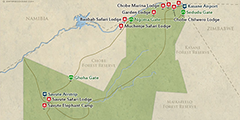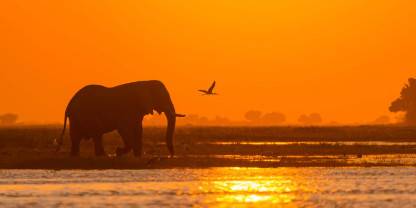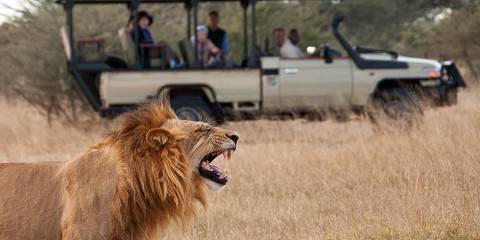One of the best wildlife reserves in southern Africa, Chobe National Park is renowned for predators and elephants. At the heart of its appeal are two legendary wildlife areas: Chobe Riverfront and Savuti. The Chobe is one of Africa’s magical rivers, and the riverfront is brilliant in the late afternoon when elephant and buffalo come to drink. Watch also for hippos, crocs, predators and phenomenal birdlife. Savuti is brilliant for big cats and wild dogs, and is wild Africa at its best.

-
Best Time To Go
- April to October (Best at the riverfront area)
-
High Season
- July to October (The park gets crowded)
-
Size
- 11,700km² / 4,517mi²
-
Altitude
-
919-1,061m /3,015-3,481ft
 View Photos
View Photos
 View Photos
+24
Photos
View Photos
+24
Photos
 Open Map
Open Map
Pros & Cons
- Exceptional wildlife viewing
- Four of the Big Five present (no rhino)
- Ideal birding destination, especially for waterbirds
- and boat safaris available
- Excellent self-drive safari destination
- The waterfront area near the gateway town of Kasane can get crowded
- It can get very hot from September to April
- Limited safari circuits inside the park
- Some tracks in the Savuti area are very sandy
Wildlife
As well as prolific elephants and buffalo, common waterbuck, plains zebras, impalas and pukus are abundant on the and easily seen on boat safaris in the Dry season (April to October). Early morning are most productive for finding predators such as lions, leopards and spotted hyenas. Giraffe are often spotted, especially around the Savuti Marsh.
More about Chobe’s wildlifeScenery
Chobe’s lifeline, and most beautiful feature, is the Chobe River, which meanders through , woodland and out onto the . The contrast between the deep greens and blues of the floodplains and the yellows of Savuti couldn’t be more pronounced. The latter is a patchwork of and flat Kalahari sandveld (dry, sandy soil). The often-dry Savuti Marsh consists of vast savannah grasslands and is sometimes compared to the Serengeti.
Activities
Guided and self-guided are the most popular activities in the park. There are trails along Chobe Riverfront (between Ngoma and Sedudu Gates) and through the Savuti area. In addition, the Nogatsaa/Tchinga area (south of the Chobe Transit Route) is wild and undeveloped, and has lots of elephants. Excellent boat safaris along the riverfront in the late afternoon are also possible from Kasane.
Weather & Climate
Average daytime temperatures in the Dry season (April to October) start at 33°C/91°F in April, and by October they’ve climbed to a very hot 36°C/97°F. Conditions stay fairly hot in the first two months of the Wet season (November to March), before the heavy storms of January and February sweep away the worst of the heat.
More about the weather and climateBest Time To Visit
You can see animals year-round at Chobe, but the Dry season (April to October) is when wildlife viewing is at its best here, particularly along the southern bank of the park’s broad, namesake river. It gets better as the season progresses, but it also gets hotter too.
More about the best time to visit



